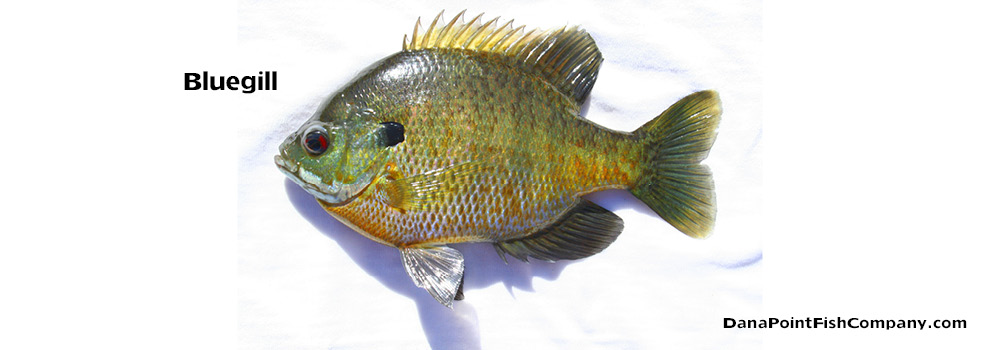Bluegill – Lepomis macrochirus, also known as brim or bream. The name comes from – Lepomis: Greek, lepis = scaled + Greek, poma = gill cover, operculum; macrochirus: macrochirus meaning large hand, probably referring to the body shape (fishbase).
Identifying Characteristics
- Bluegills have a small head and mouth with a largish pan shaped body.
- Bluegill coloring is olive to olive green for the back, blue, purple, and gold along the sides with light vertical bars. Their throats and bellies are often orange or yellowish. Breeding males will have more blue and orange in their coloration.
- There is a dark blue or black spot on the opercular flap, and a dark spot on the base of the dorsal fin.
- Fully mature at 1 to 2 years of age, with a life span of around 10 years.
Range and Habitat
- Freshwater fish.
- Widely found in North America.
- Bluegill can be found in lakes, ponds, and streams. They prefer protected areas with clear water with a sandy or muddy bottom.
Market Forms
- The bluegill is one of the most popular panfish or sunfish.
Sources:
Froese, Rainer. “Lepomis Macrochirus Summary Page.” FishBase. Fishbase.org, n.d. Web. 10 May 2017.
Hammers, Brad E., and Shari L. Bryant. The Bluegill. NC: North Carolina Wildlife Resources Commission, 1996. NC Wildlife. North Carolina Wildlife Resources Commission, 1996. Web.

